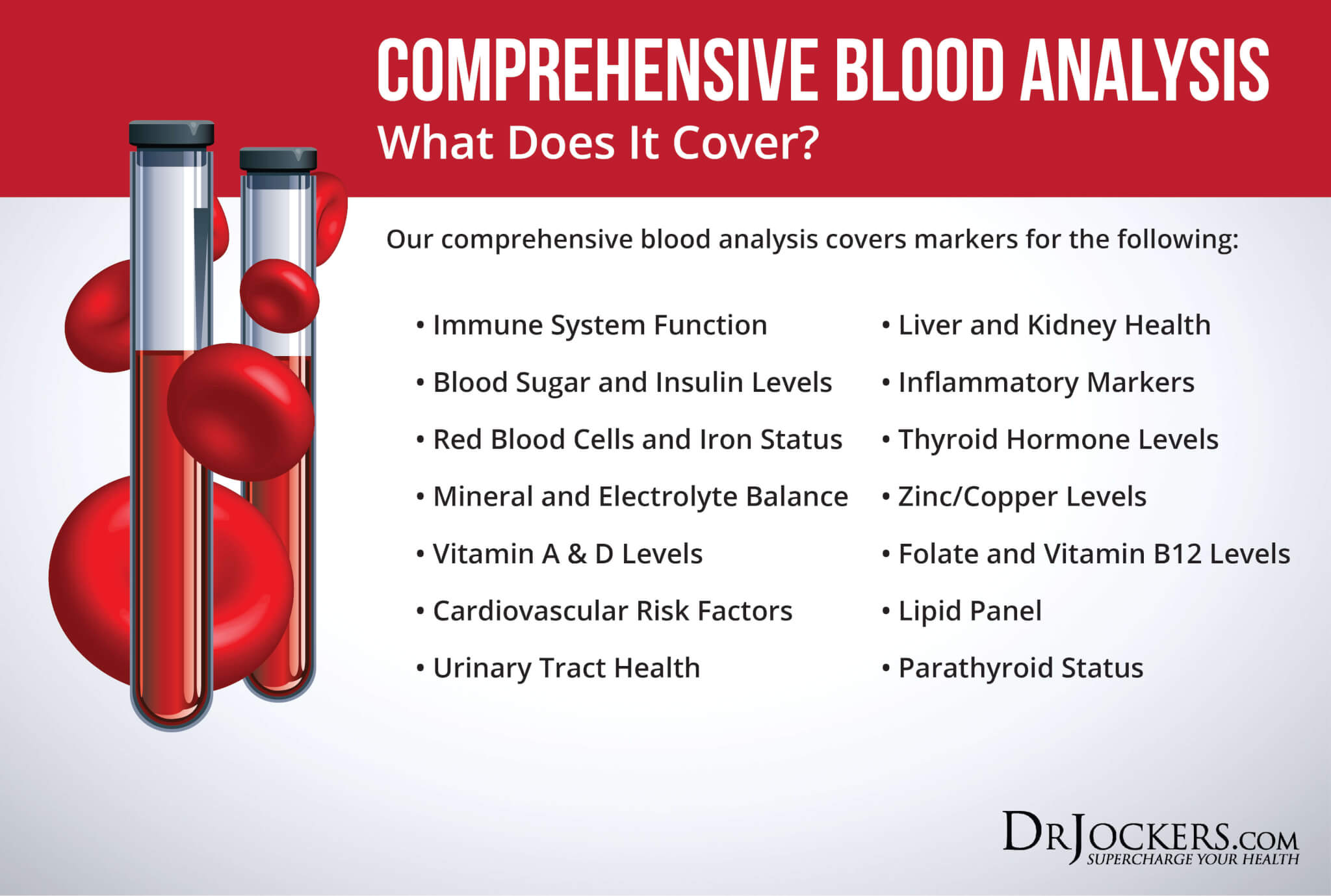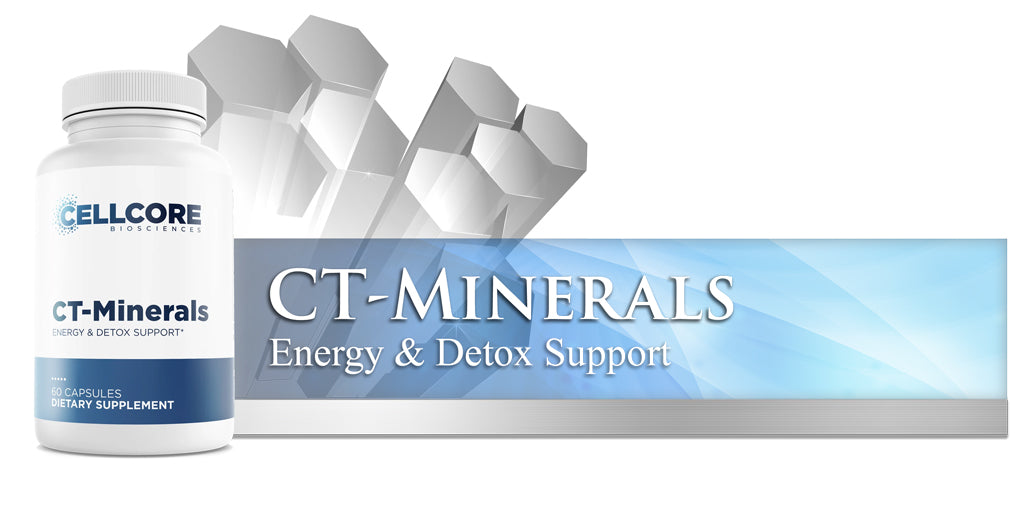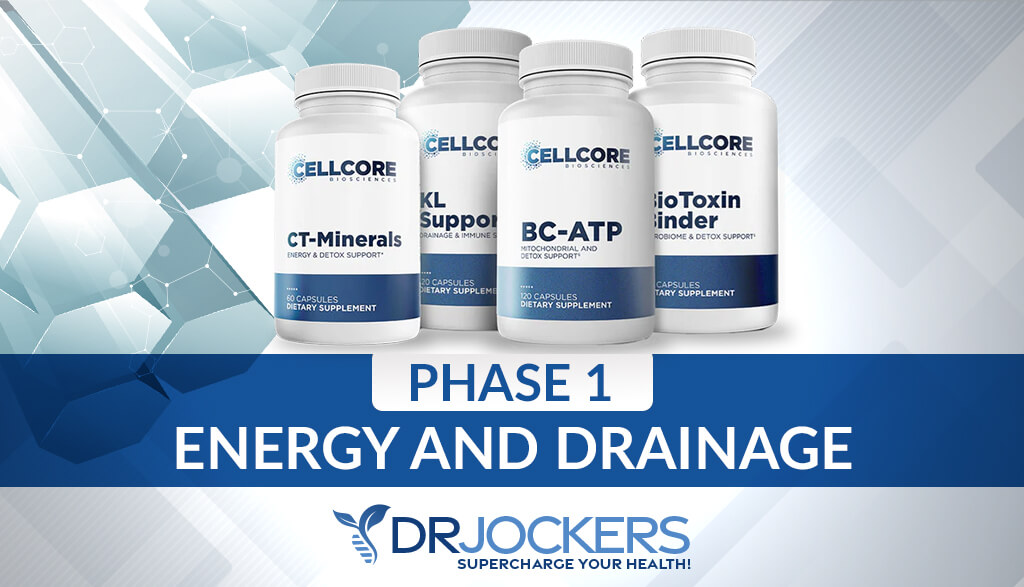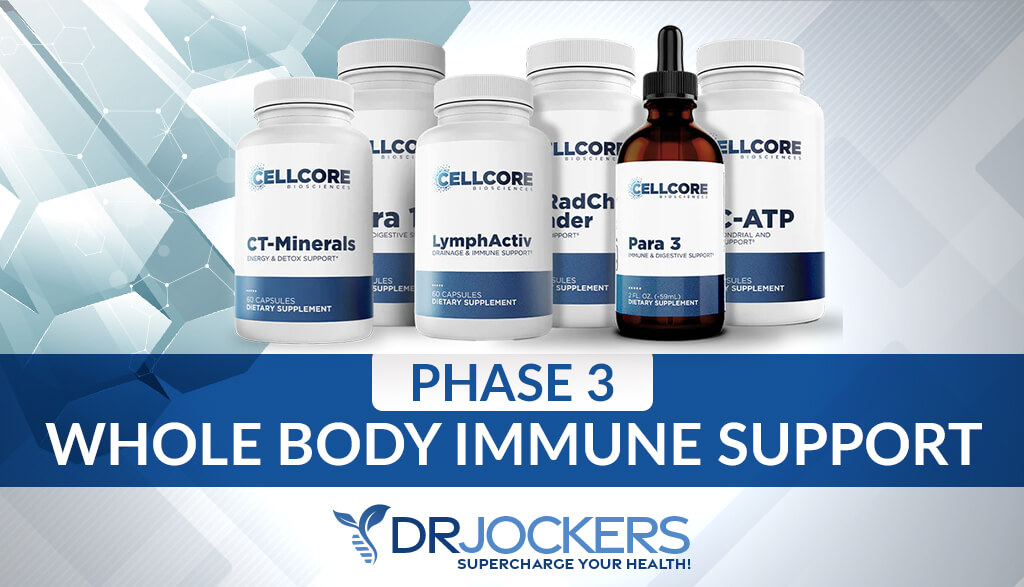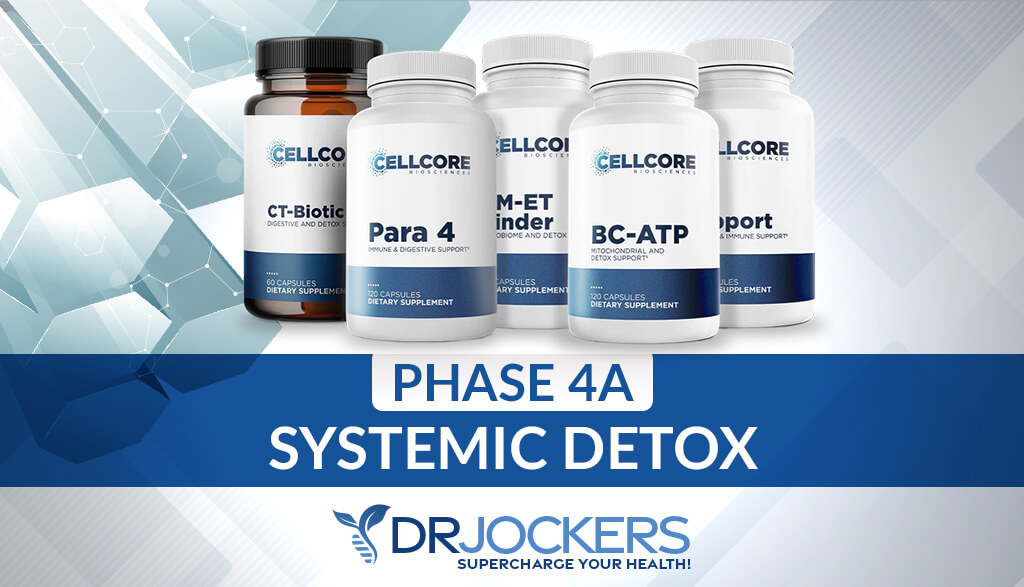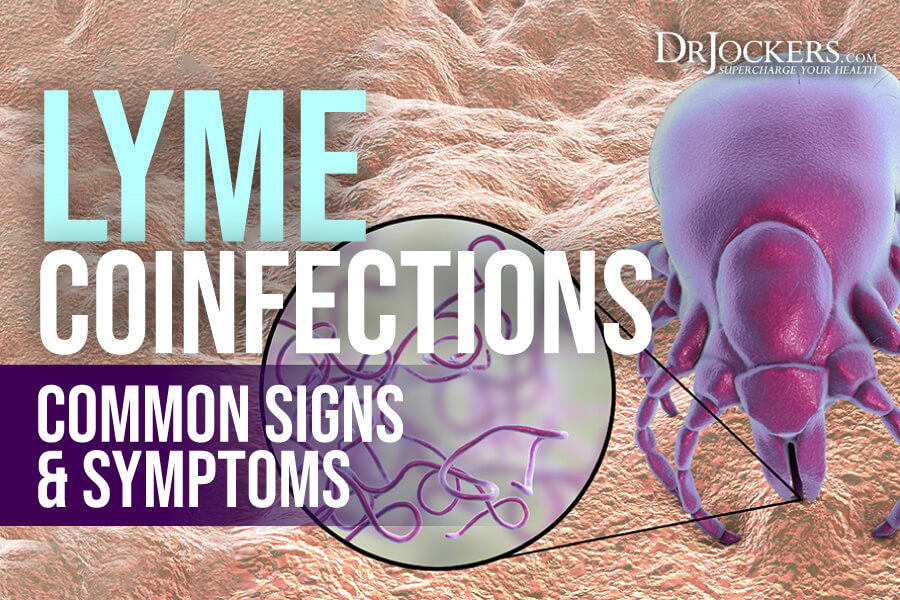 Lyme Coinfections: Common Signs & Symptoms
Lyme Coinfections: Common Signs & Symptoms
You’ve probably heard about Lyme disease. But have you heard about Lyme coinfections? Lyme coinfections are often caused by the same ticks as Lyme disease and often occur at the same time. They can become chronic and cause severe symptoms and serious health issues. Yet, they are often missed during diagnosis and left untreated. Recognizing underlying Lyme coinfections may be a critical key to your recovery.
In this article, you will learn what Lyme coinfections are. I will go over the top major Lyme coinfections, Bartonella, Babesia, Ehrlichia, and Rickettsia. I will also share my top natural support strategies to overcome Lyme coinfections.
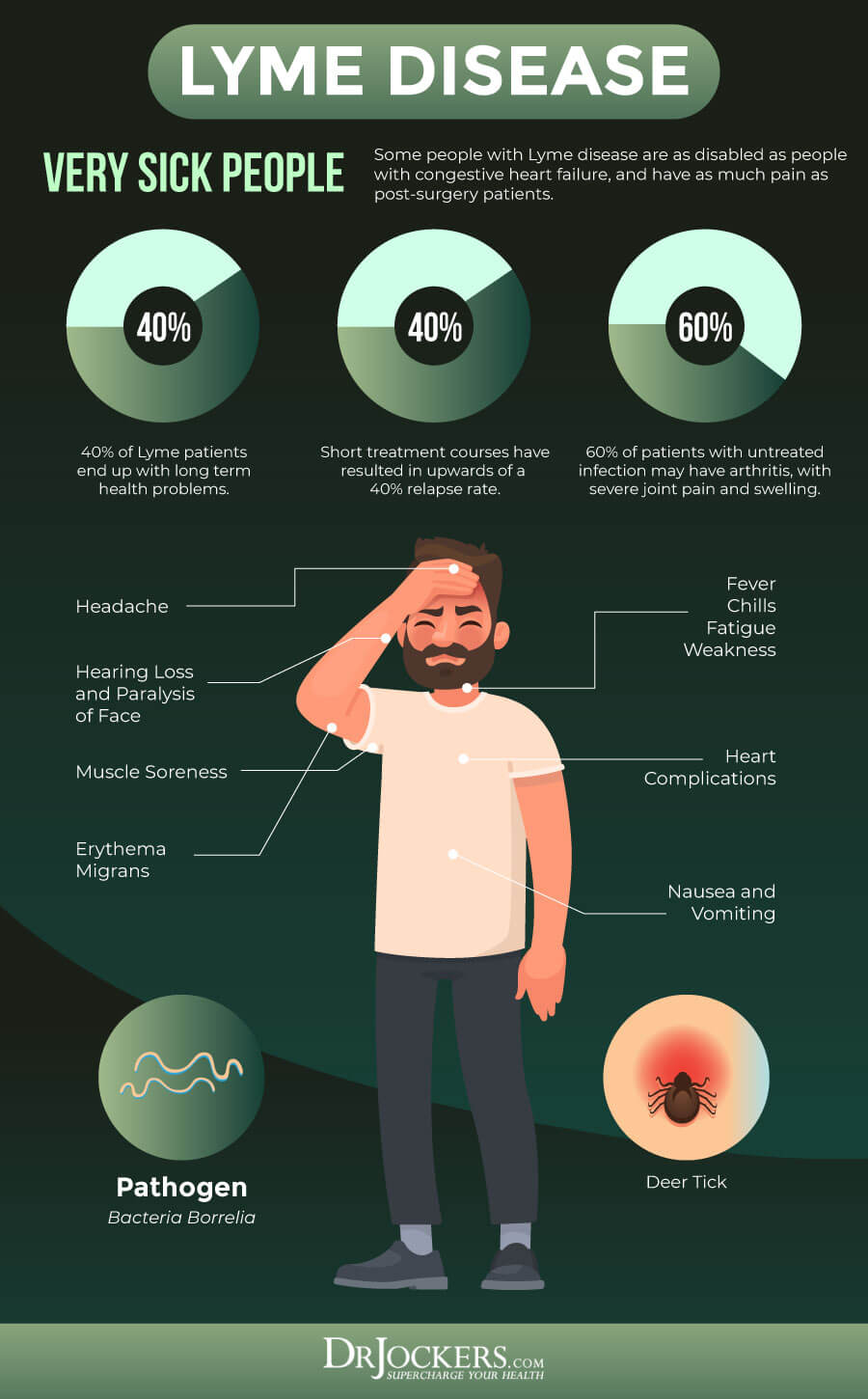
What Are Lyme Coinfections
Lyme disease is a chronic inflammatory disease. Acute Lyme disease may present itself with a rash, headache, fever, and chills, or no symptoms at all. However, Lyme disease can turn chronic. Chronic Lyme disease is characterized by joint and muscle pain, neurological symptoms, and cardiac issues.
Lyme disease is caused by bacteria transmitted by tick through tick bites. However, the Lyme bacteria is not the only infection you need to worry about when bitten by a tick. Ticks and other insects can also transmit Borrelia or other bacteria that are often transmitted at the same time as the Lyme bacteria with the same insect bite.
Since these bacterial transmission and infections occur at the same time as Lyme disease, they are called coinfections of Lyme coinfections. According to a 2014 survey published in Peer Journal has found that about 30 percent of patients with Lyme disease also had Lyme coinfections (1).
Tick bites and other insect bites can spread a long list of pathogens. Ticks alone may spread over 200 different types of bacteria and pathogens to humans and other animals.
A 2006 review published in Clinical Microbiology Reviews, a 2014 review published in the International Journal of General Medicine, a 2014 study published in Ticks and Tick-Borne Diseases, and a 2014 review published in the Journal of Virology has all discussed various tick-borne pathogens in North America, Europa, and Asia, including Lyme disease (LD), human anaplasmosis, babesiosis, Borrelia burgdorferi s.l., Ehrlichia chaffeensis, Anaplasma phagocytophilum, Yersinia pestis, and tick-borne phleboviruses, a mononegavirus, and viruses (2, 3, 4, 5).
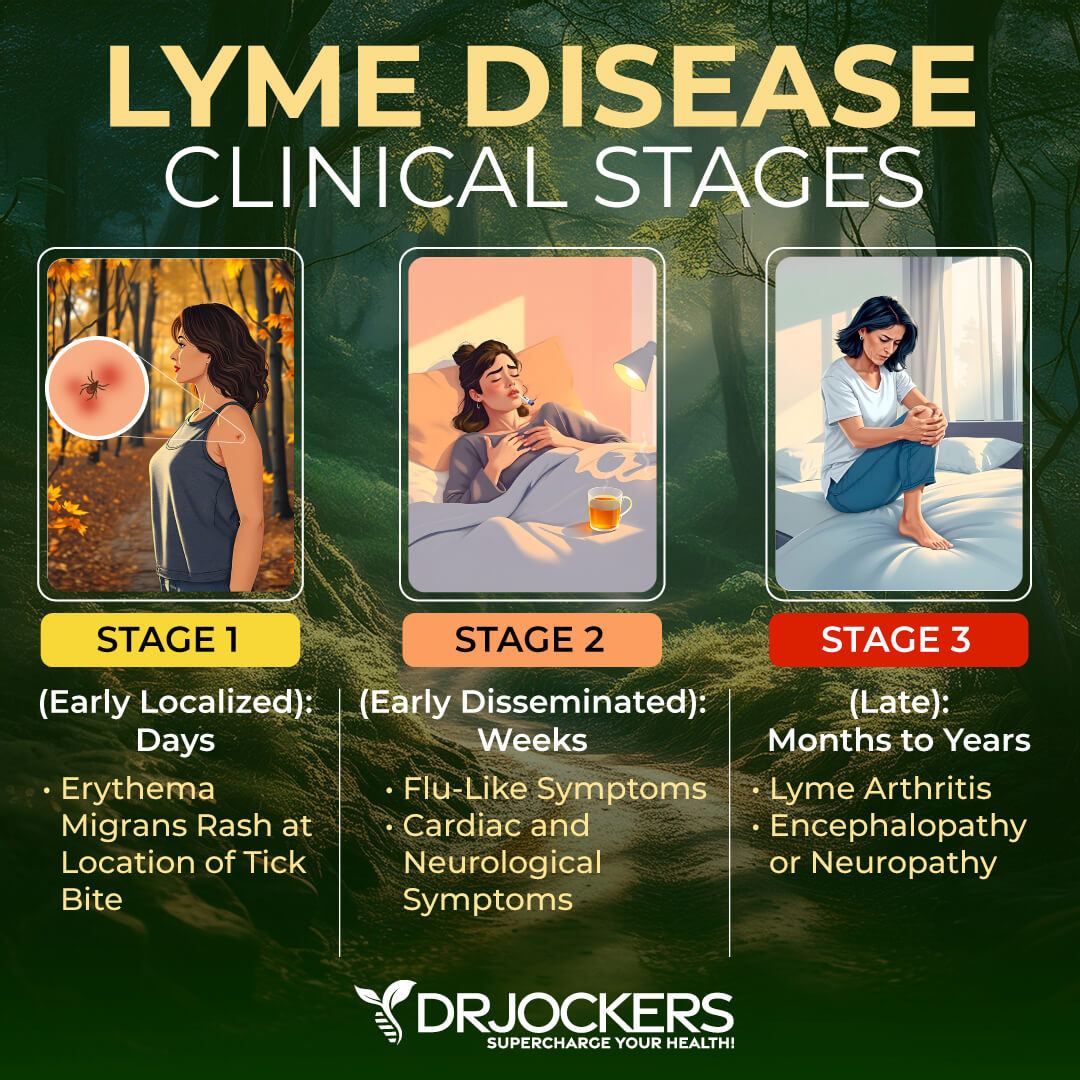
Most Common Lyme Coinfections
Babesia, Bartonella, Ehrlichia, and Rickettsia are among the most common Lyme coinfections. Most Lyme coinfections are caused by bacteria, but Babesia is a parasitic infection. All the other three are bacterial. A 2014 survey published in Peer Journal has looked at 3,000 people with Lyme disease and found that 32.3 percent had Babesia, 28.3 percent had Bartonella, 14.5 percent had Ehrlichia, and 5.6 percent had Rickettsia as a Lyme co-infection (1).
These numbers are probably underestimated as co-infections can be challenging to detect in blood tests and many doctors don’t even look at them. For example, a 2012 article published in the Open Neurological Journal and a 2021 article published by Treasure Island (FL) has explained that false negatives are common with Bartonella co-infections (6, 7).
Missing and overlooking Lyme coinfections, however, can lead to serious issues when it comes to treatment and recovery. The symptoms of Lyme coinfections can be severe and can add to the severity of Lyme disease itself. According to a 2018 article published in Science Reports, not treating coinfections can compromise full recovery from Lyme disease (8).
According to a 2014 systematic review published in the American Journal of Medicine, these infections can also occur without the presence of Lyme disease and may be transmitted by other insects besides ticks (9). Many doctors, may stop digging further and testing for these because of the lack of a tick bite or after a negative Lyme diagnosis.
They often send you your away after a false negative without treating your infection. Yet, if you are showing signs of these infections and struggling with unexplained chronic symptoms, it is critical to look for both Lyme disease and Lyme coinfections with or without the presence of Lyme disease.

Bartonella
There are about 20 different types of Bartonella bacteria, but only a few have been found in humans (7). These species of Bartonella include:
- Bartonella henselae: You can catch this from the scratch and possibly the bite of an infected cat and it causes what is known as the cat-scratch fever (10).
- Bartonella bacilliformis: You can get infected from infected sand flies in Peru and other areas of South America and it causes Carrion’s disease (11, 12).
- Bartonella quintana: You can catch it from infected body lice in North America, Europe, Africa, and China, and it causes trench fever (11, 12).
According to a 2019 review published in Tropical Medicine and Infectious Disease, Bartonella can also spread through tick bites and fleas and possibly through mites, bed bugs, spiders, and red ants (10).
How a Bartonella Infection Impacts the Body
Bartonella targets the endothelial cells that line the blood vessels of your body. It can prevent these cells from self-destruction. They also create a thick armor around themselves make it difficult to fight them.
They can also move into your blood vessels, red blood cells, and lymph nodes (7). Unfortunately, Bartonella is very smart and according to a 2019 study published in Frontiers in Microbiology, it can suppress your immune cells leading to various issues (13).
Signs & Symptoms of a Bartonella Infection
Symptoms of Bartonella infection may overlap with the symptoms of Lyme disease and other coinfections. They may be mild to severe. They may include:
- Blurred vision
- Headaches at the back of the neck
- Joint pain
- Muscle pain
- Anxiety or depression
- Memory loss
- Swollen lymph nodes
- Pain on the soles of the feet
- Reoccurring low-grade fever
- High sensitivity to stimuli, such as touch, sound, food, and so on
- Streaked skin rash
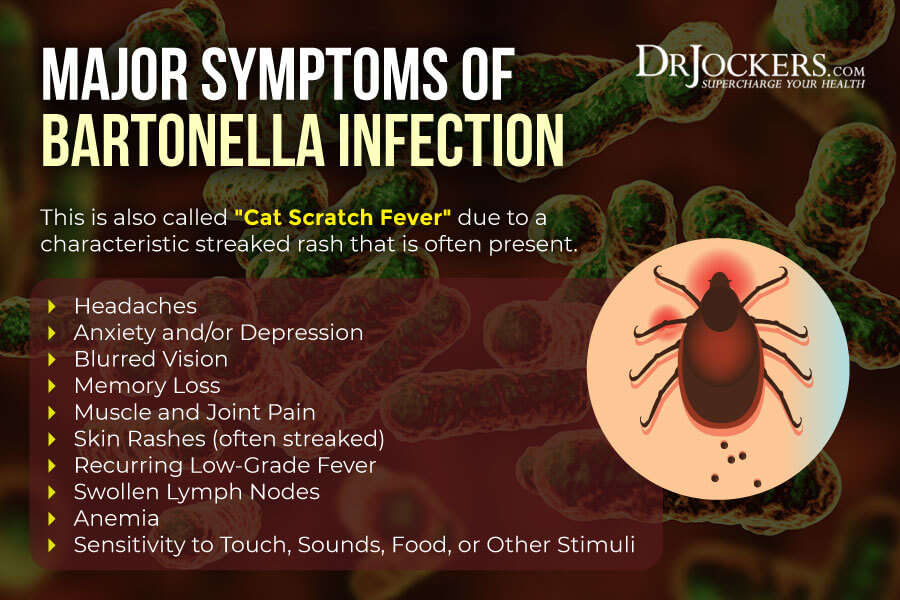
Babesia
Babesia is not a bacteria, but a single-celled parasite that is related to the parasite that causes malaria. Babesia can infect your red blood cells. There are 100 different species of Babesia, but as with Bartonella, only a few of them can infect people.
The most common type is Babesia microti. Babesia spreads through tick bites, especially younger ticks that are very small, so many people don’t even notice the bite. You may also get infected through blood transfusion, organ transplant, and it can move from mother to child in the womb or during delivery (14, 15, 16).
How a Babesia Infection Impacts the Body
Babesia is one of the few microbes that can get into your red blood cells. Thus it can reproduce in your red blood cells. As a 2008 review published in the Infectious Disease Clinics in North America, babesia damages their cell membranes and continues to attack other red blood cells (17).
According to a 2013 review published in the International Journal of General Medicine, it acts like a chameleon making it difficult for your immune system to recognize (18). This is the main reason why this parasite can cause long-term infections and issues, often without a diagnosis or treatment.
Signs & Symptoms of a Babesia Infection
Signs and symptoms of Babesia infection may be flu-like. They may be anywhere from mild to severe. Other infections and immunosuppressant medications may make it worse. Signs and symptoms of Babesia may include:
- Chills
- Cough
- Drenched in sweat
- Headaches
- Fatigue
- Muscle aches
- Joint pain
- Little appetite
- Nausea
Additionally, it may cause hemolytic anemia, elevated liver enzyme levels, low platelet count, a build-up in your lungs or heart, or kidney failure.

Ehrlichia
Ehrlichia is often discussed alongside the Anaplasma bacteria because some Ehrlichia bacteria have been reclassified as Anaplasma. There are three kinds of these bacteria that can infect people, including Ehrlichia chaffeensis, Ehrlichia ewingii, and Anaplasma phagocytophilum (or formerly Ehrlichia phgotophilium). Ehrlichia chaffeensis is the most common one.
It can spread through tick bites of a lone star tick, but also through blood transfusion and organ transplants. Cases are rising which may be also due to improve diagnosis but also because the lone star tick is spreading to new territories (19, 20).
How an Ehrlichia Infection Impacts the Body
Ehrlichia targets your white blood cells and can also attack your lymph nodes, bone marrow, and spleen (21, 22). According to a 2009 review published in PLoS Pathogens, since it cannot make its own cholesterol, Ehrlichia steals it from your body, which is essential for its reproduction and survival (23).
Just like other coinfections, it can trick your immune system and hide from it, making it difficult to fight the infection (21, 22).
Signs & Symptoms of an Ehrlichia Infection
Symptoms are flu-like and can begin two weeks after the infection. They may include:
- Chills
- Cough
- Body aches
- Fatigue
- Diarrhea
- High fever
- Severe headaches
- Nausea
- Muscle pain
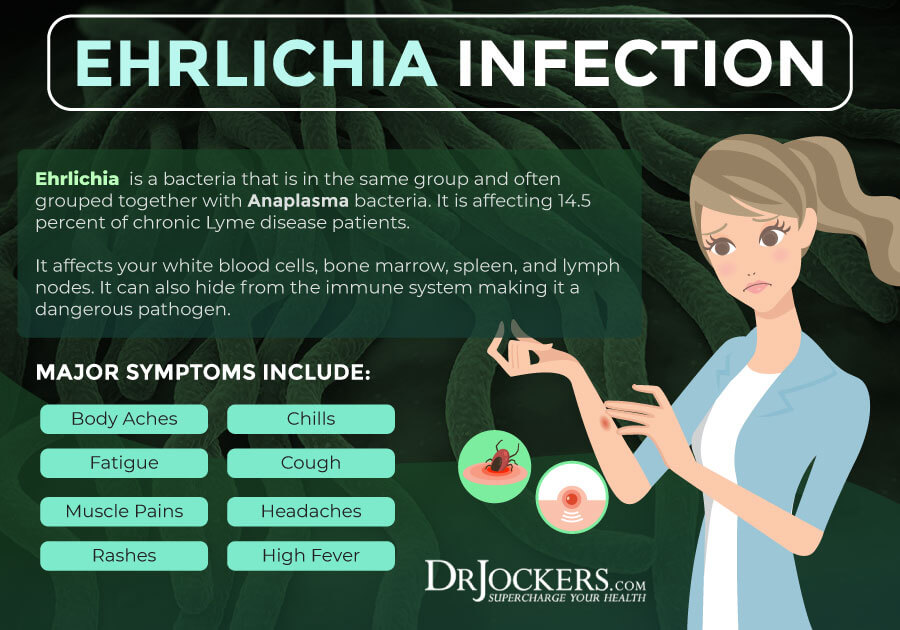
Rickettsia
Rickettsia has 26 types of species that we currently know of but Rickettsia rickettsii is the one that most commonly causes severe infection, called Rocky Mountain Spotted Fever (24).
While it is Rickettsia is the most common in North America, according to a 2018 review published in Research Reports in Tropical Medicine has found that the infection has been seen in Central America and according to a 2011 review published in Clinical Microbiology and Infections has found that it has been seen in sub-Saharan Africa as well (25, 26). The infection can enter and spread quickly after even a brief tick bite making it difficult to notice (24).
How a Rickettsia Infection Impacts the Body
Rickettsia creates inflammation in your body by affecting the lining of your small and medium blood vessels. Once the inflammation has weakened your blood vessels, it can spread to tissues in other areas of your body.
The inflammation of the blood vessels generally affects your arms, fingers, legs, and toes, and in severe cases, it can turn into a permanent issue or even amputation. The infection can compromise your immune health and spread easily and rapidly (24).
Signs & Symptoms of a Rickettsia Infection
When left untreated, Rickettsia or Rocky Mountain Spotted Fever can lead to serious damage or even death. Finding medical help right away is critical. Symptoms may include:
- Fatigue
- Headache
- Confusion
- Light sensitivity
- Fever
- Muscle aches
- Light sensitivity
- Nausea
- Poor appetite
- Stomach pain
- Rash
In most cases, rashes appear within 2 to 4 days on the abdomen, ankles, and wrists with red dots. Rocky Mountain Spotted Fever may also cause low blood sodium, anemia, high liver enzymes, and low platelets.
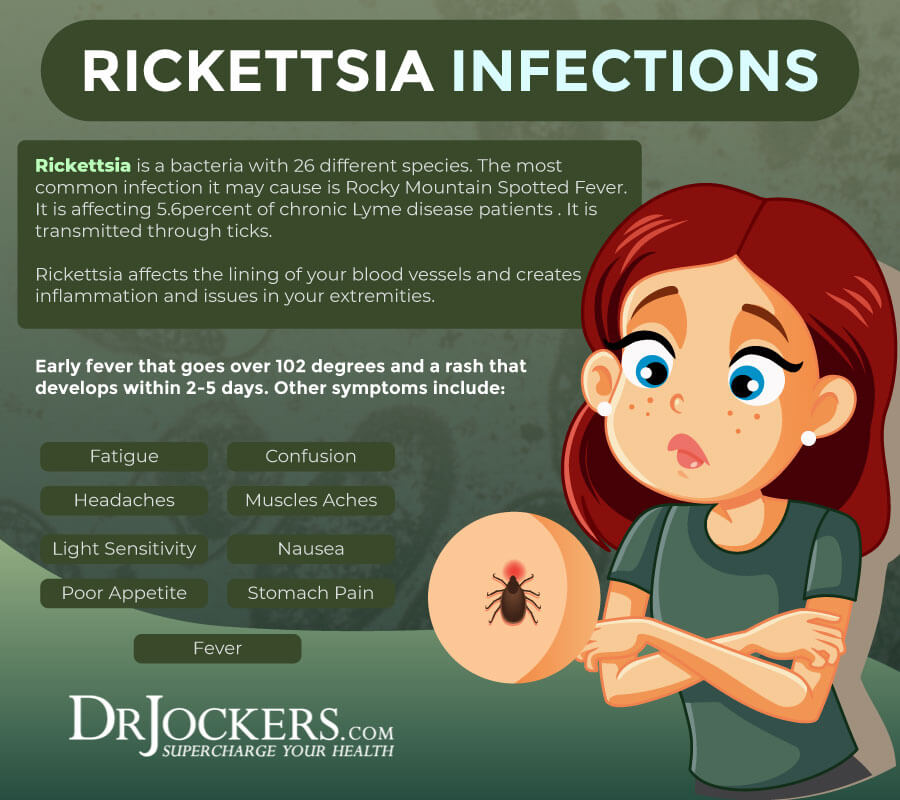
Opportunistic Pathogens
Lyme coinfections are infections transmitted at the same time as the Borrelia Lyme infection. However, there are other opportunistic pathogens you have to worry about if you have Lyme disease, not just Lyme coinfections.
According to a 2018 study published in Science Reports, the Lyme bacteria and Lyme coinfections can damage your immune system and support your own survival (8). Because these infections cause inflammation and decreased immunity, they increase the risk of other opportunistic infections that can cause complex chronic symptoms and chronic illness.
Some of these opportunistic pathogens include viral and bacterial infections, including the Epstein-Barr virus (EBV), the human parvovirus, cytomegalovirus, coxsackievirus, Chlamydia pneumoniae, and Mycoplasma pneumoniae (8).
In some cases, ticks can transmit these infections, making them true Lyme coinfections. In other cases, they co-occur with Lyme disease due to compromised health from Lyme disease and Lyme coinfections. Whether they are true coinfections or not, these viruses and parasites can seriously impact your health and cause chronic health issues.
Lyme disease, Lyme coinfections, and these opportunistic pathogens we’ve just talked about compromise your immune system and entire well-being. This can make your body more susceptible to regular infections. You may catch the cold and flu more easily than others or have several parasitic infections as a result. Your body may also have a much more difficult time recovering from these infections.
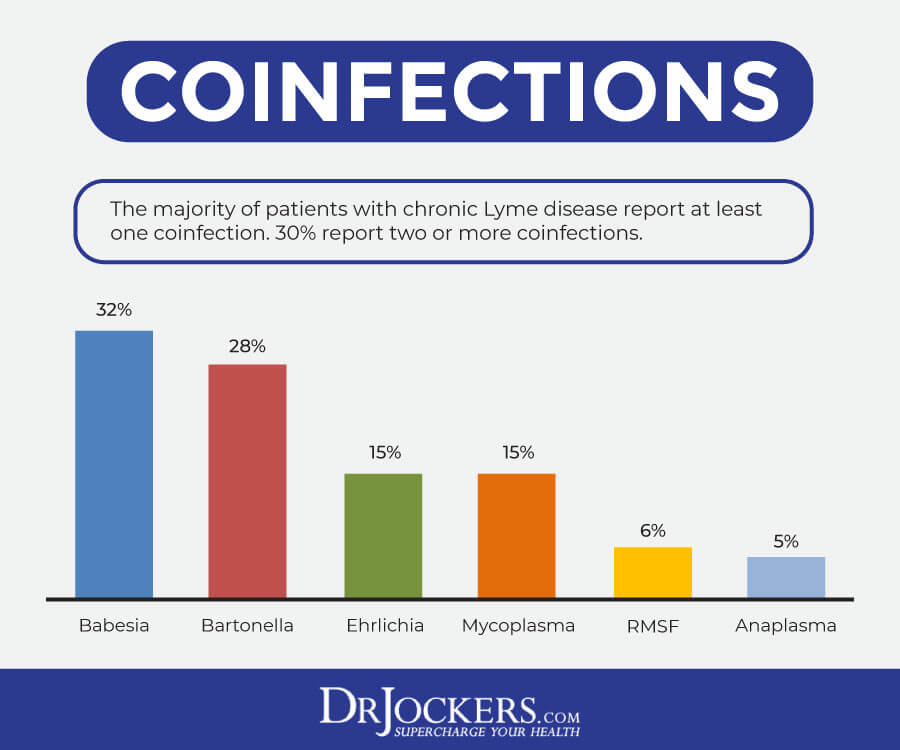
Best Testing Strategies
If you believe that you may have Lyme disease, it is important that you work with a Lyme-literate doctor who understands the best testing strategies and treatment methods. Instead of relying on your body’s antibody response to bacteria, it is important to also use direct testing that is looking at the disease-causing bacteria and co-infections.
Igenex
Igenex offers great testing for Borrelia burgdorferi and co-infections, Babesia, Bartonella, Ehrlichia, Anaplasma, and Rickettsia. It offers comprehensive, effective, and precise diagnostic testing for Lyme-disease and tick-borne infections with a superior sensitivity rate than standard testing methods.
These testing kits include both indirect and direct testing solutions. While indirect tests examine the response of the patient’s immune system to the presence of B. burgdoferi, direct tests look for B. burgdoferi antigens and nucleic acids.
DNA Connexions
DNA ConneXions Lyme is a simple at-home test that detects the presence of DNA from Borrelia burgdorferi and 11 other potential tick-borne co-infections. It is a simple and affordable at-home test that can help you get the right diagnosis and treatment.
Importantly, as DNA Connexions points out on their website, a negative result from their Lyme panel doesn’t necessarily indicate the lack of an infection, but instead indicates the absence of any detectable tick borne or Lyme-based co-infections. In some cases, the timing of antibiotic courses and the patients’ ability to fight the disease will determine the detectability of the DNA spirochetes.
Comprehensive Blood Analysis
Since chronic Lyme disease is very complex, it affects your entire body and leads to a large variety of symptoms and health issues. It may make you more vulnerable to further infections and health problems. To cover everything, a Lyme-literate doctor may include a variety of other tests besides the ones that detect the Lyme-causing bacteria and co-inflections to detect or rule out other issues, including:
- Complete blood count (CBC): white blood cells count (WBC), differential (diff), hemoglobin (HB)
- Blood chemistry: electrolytes, liver function, kidney function
- Glucose metabolism: fasting blood glucose, fasting insulin hemoglobin A1c (HbA1c)
- Minerals: magnesium and calcium
- Lipid panel
- Thyroid function: complete thyroid
- Vitamins: vitamin D and B12
- Iron: ferritin
- C-reactive protein (CRP)
- Urinalysis: pH, WBCs, nitrites, protein, bilirubin
- Mold and mycotoxins
- Comprehensive stool analysis: yeast, parasites, viruses, and bacteria
- Adrenal hormone testing
- Reproductive hormone testing: estrogen, progesterone, testosterone
- Testing for toxins
- Microbes testing
- Folate and methylation: MTHFR gene mutation
- Testing for neurological, cardiac, and GI symptoms
We offer many of these tests in our comprehensive blood analysis. When you order testing through DrJockers.com, one of our health coaches will help review the results with you and offer helpful advice to guide you on your health journey.
Support Strategies to Overcome Lyme Coinfections
There are a number of natural support strategies you can try to overcome Lyme coinfections. Here is what I recommend:
Anti-Inflammatory Nutrition Plan
Chronic infections, including Lyme coinfections, tend to cause chronic inflammation and related symptoms. To reduce chronic inflammation, I recommend an anti-inflammatory nutrition plan. Begin by removing all inflammatory foods, including refined sugar, refined oil, gluten, conventional dairy, processed and canned meat, additives, artificial ingredients, junk food, and highly processed foods.
Follow an anti-inflammatory nutrition plan with plenty of greens, vegetables, herbs, spices, fermented foods, low glycemic index fruits, grass-fed meat and butter, pasture-raised poultry and eggs, organ meats, omega-3-rich wild-caught fish, and wild game.
Choose organic whenever possible to avoid pesticides, herbicides, and added hormones. Eat plenty of healthy fats, including omega-3 rich fish and seafood, avocados, coconut oil, coconut butter, coconuts, avocado oil, extra-virgin olive oil, pasture-raised butter and ghee, lard, flax seeds, hemp seeds, chia seeds, pumpkin seeds, other seeds, olives, and nuts. Try anti-inflammatory and antioxidant-rich herbs and spices, such as turmeric, ginger, black pepper, cinnamon, rosemary, garlic, and onion.

Reduce Stress & Optimize Sleep
Reducing stress and optimizing sleep can help to reduce inflammation and support your body’s recovery from infections and illness. Reduce stress as much as possible. Stop scrolling your phone or browser all the time. Designate a specific time for the news and social media, then forget about it for the rest of the day.
Learn to manage stress better. Meditation, breathwork, gratitude, mindfulness, positive affirmations, journaling, exercise, and prayer are great strategies that can help with stress management. Uplift your mood by spending time with friends and family, seeking a supportive community, having a designated personal time, and spending time in nature.
Optimize your sleep start several hours before your bedtime. Create an evening routine that helps to calm your mind after a long day. Reading, crossword puzzles, journaling, creative writing. coloring, listening to calming music, taking a bath, prayer, meditation, and loving conversations are all great ideas for a relaxing evening. Avoid heavy food, alcohol, electronics, and anything stressful.
Your bedroom should be a peaceful sanctuary with calming colors, essential oils, a supportive bed, and comfortable bedding and pillow. Go to bed and wake up around the same time to support your body’s natural sleep-wake cycle. Using blackout curtains or an eye mask can help to support an uninterrupted overnight sleep. Aim to get 7 to 9 hours of restorative sleep each night.

Open Up Drainage Pathways
Opening up your drainage pathways is critical for allowing your body to detoxify your body and reduce inflammation and symptoms. Supporting your lymphatic system is a critical step. Dry brushing is a daily practice that I recommend before showering. Use a brush on your dry skin and brush your body towards your heart in circular motions to stimulate your lymphatic system. Regular movement and exercise are also great for your lymphatic system.
Daily rebounding is one of my favorite ways to stimulate my lymphatic system within just a short 5 to 10-minute session. It is also great for cardio, energy, and a positive mood. Additionally, you may want to try healing baths and try lymph-supporting herbs. You can find lymphatic detox supplements loaded with lymph-supporting herbs, including Turkey Rhubarb, Sheep Sorrel, Burdock Root, Slippery Elm Bark, Astragalus Root, and Graviola Chuchuhuasi.
Additionally, support your drainage and elimination of toxins through urine, sweat, and bowel movement. Hydrate your body well to support detoxification through sweating and urine. Move your body or try infrared sauna daily to increase sweating. Support your gut flora and healthy elimination with high-quality probiotics.
Use activated coconut charcoal or bioactive carbons such as fulvic and humic acids to remove toxins from your intestinal tract. Support your two major detoxifying organs, your kidneys and liver, and support their healthy functioning with kidney and liver support supplements. You may search my website and find information on all these strategies, including dry-brushing, infrared saunas, and lymphatic detox.
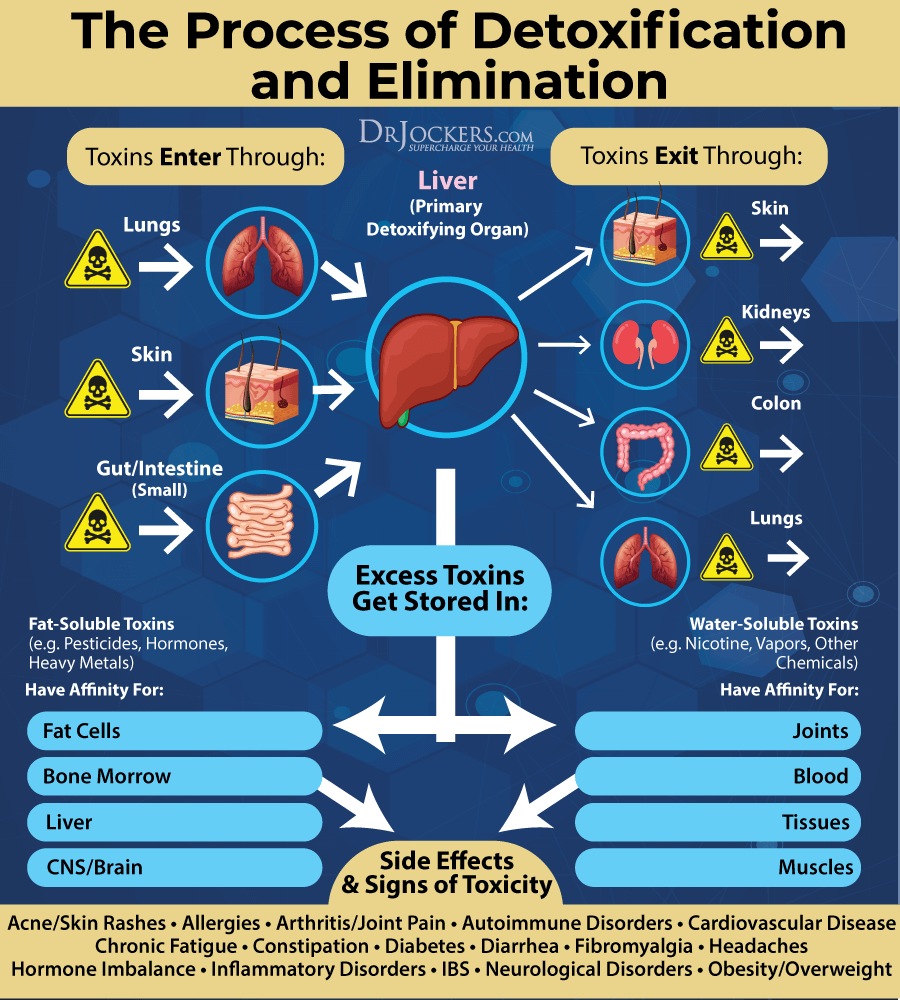
Improve Minerals and Cellular Energy Levels
Improve your mineral levels and cellular energy levels. Eating an antioxidant-rich and nutrient-dense diet is critical for your mineral balance and cellular energy levels. Eating plenty of vegetables and using an electrolyte supplement can help to replenish electrolytes and improve your mineral levels. Zinc is a fantastic mineral that supports your immune system and helps to fight infections.
Vitamin A, C, B, D, and E are also important for your immune health and cellular energy levels. You may also try mitochondria-supporting nutrients and compounds, including CoQ10, L-carnitine, B vitamins, magnesium, ALA, creatine, resveratrol, curcumins, and D-Ribose for cellular energy.
We will often use CT-Minerals to help support people in the early phases of healing to help support cellular health.
Consider Parasite Killing Herbs
Parasitic infections often co-occur with Lyme disease and coinfections. They can drain your immune system and make your recovery from Lyme disease and coinfections more difficult. You may benefit from parasite-killing herbs.
The top herbs for parasites include black walnut, sweet wormwood, oregano, garlic, Tribulus, neem, grapefruit seed, wormseed, vidanga, passionflower, clove, and mimosa pudica seed. You can read this article about 12 herbs that may beat parasites naturally by searching my website.
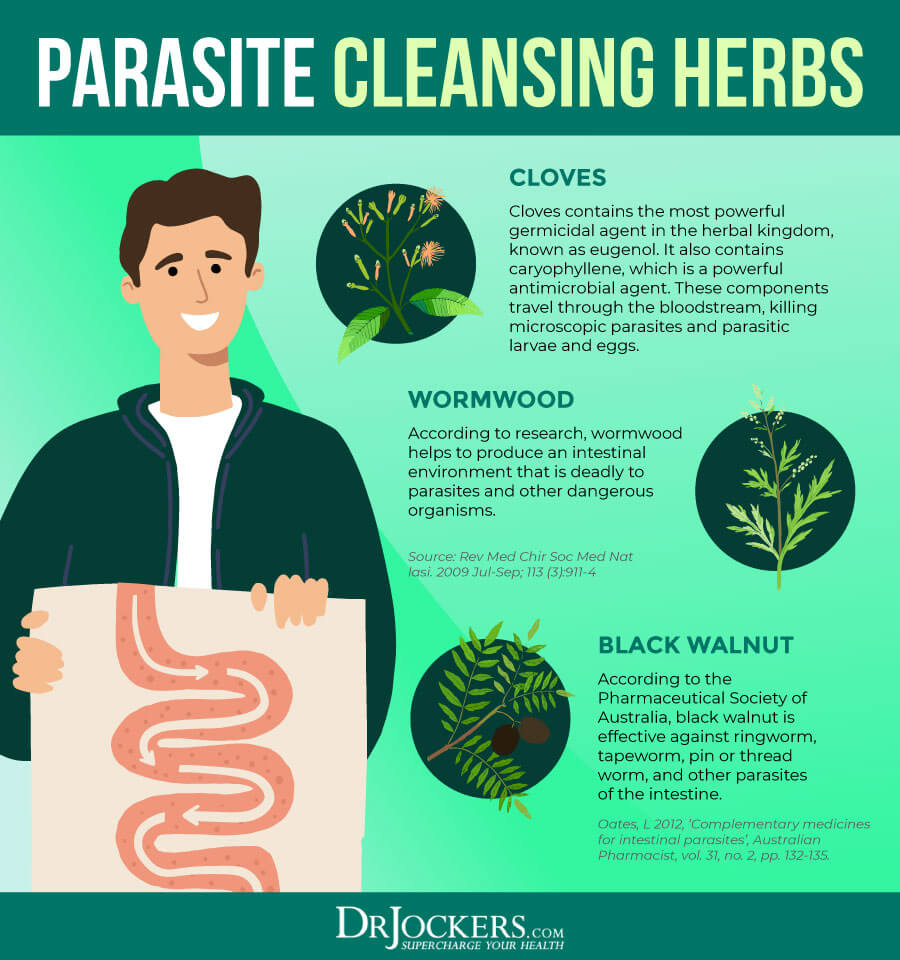
5 Phase Detox and Energy Support Protocol
To support your recovery from chronic biotoxin illness, I recommend a 4-month protocol. This protocol is not at this time FDA approved to prevent, mitigate, treat or cure any disease or serious health condition and should not be confused as such.
With that said, many people have seen significant improvement in their quality of life through following this protocol to support energy and detoxification. Remember to be patient with the process and if you are severely ill; it is wise to work with a health care practitioner to guide you along the way. Each phase is designed to be between 30 days and we will often repeat this cycle 2-3 times over the course of a year to get deep healing results.

Phase 1:Support Energy & Drainage
The goal of Phase 1 is to establish healthy drainage pathways and support mitochondria function. We are also working on getting rid of bacterial overgrowth and mold and fungal compounds in the body.
The liver and gallbladder are involved in the formation of bile, which is very important for your digestion. Bile ducts long tube-like structures that carry bile. To improve bile flow and your bile duct health: eat an anti-inflammatory diet, address food sensitivities, eliminate processed food, energy drinks, caffeine, and smoking; lower stress, reduce alcohol, address infections, and reduce environmental toxicity. Learn more about bile health in this article (21).
The mitochondria are the powerhouse of your cell that is important for cellular energy, cellular repair, and organ metabolism. To support your mitochondria, eat a nutrient-dense ketogenic diet, move your body, reduce stress, practice intermittent fasting and take mitochondria-supporting supplements, such as CT-Minerals we will be using during this program. To learn more about mitochondrial health, read this article (22, 23, 24).
When dealing with biotoxin illness, we obviously have to tackle bacterial infections. However, there may be fungal or mold infections that you are dealing. Mold toxicity and fungal infections can be very damaging and may lead to respiratory issues, headaches, fatigue, nausea, mental impairments, skin inflammation, and other symptoms. This is why we also support recovery from mold and fungal infections during this phase. To learn more about mold toxicity, read this article (25, 26, 27).
Phase 1 Supplements
KL-Support: This is a fantastic supplement supports kidney and liver health. Take 2 capsules in the morning and 2 capsules in the evening.
BC-ATP: This supplement supports and optimizes mitochondrial function. Take 2 capsules in the morning and 2 capsules in the evening.
BioToxin Binder: This supplement supports your microbiome and your immune system. Take 2 capsules in the morning and 2 capsules in the evening.*
CT-Minerals: These plant-derived minerals help your digestion, tissue repair, and energy. Take 1 capsule in the morning.
*Note that binders should not be taken with traditional binders, such as charcoal, clay, or diatomaceous earth and we recommend all binders away from Para 1, prescription medications, and antibiotics, as it may interfere with their absorption.
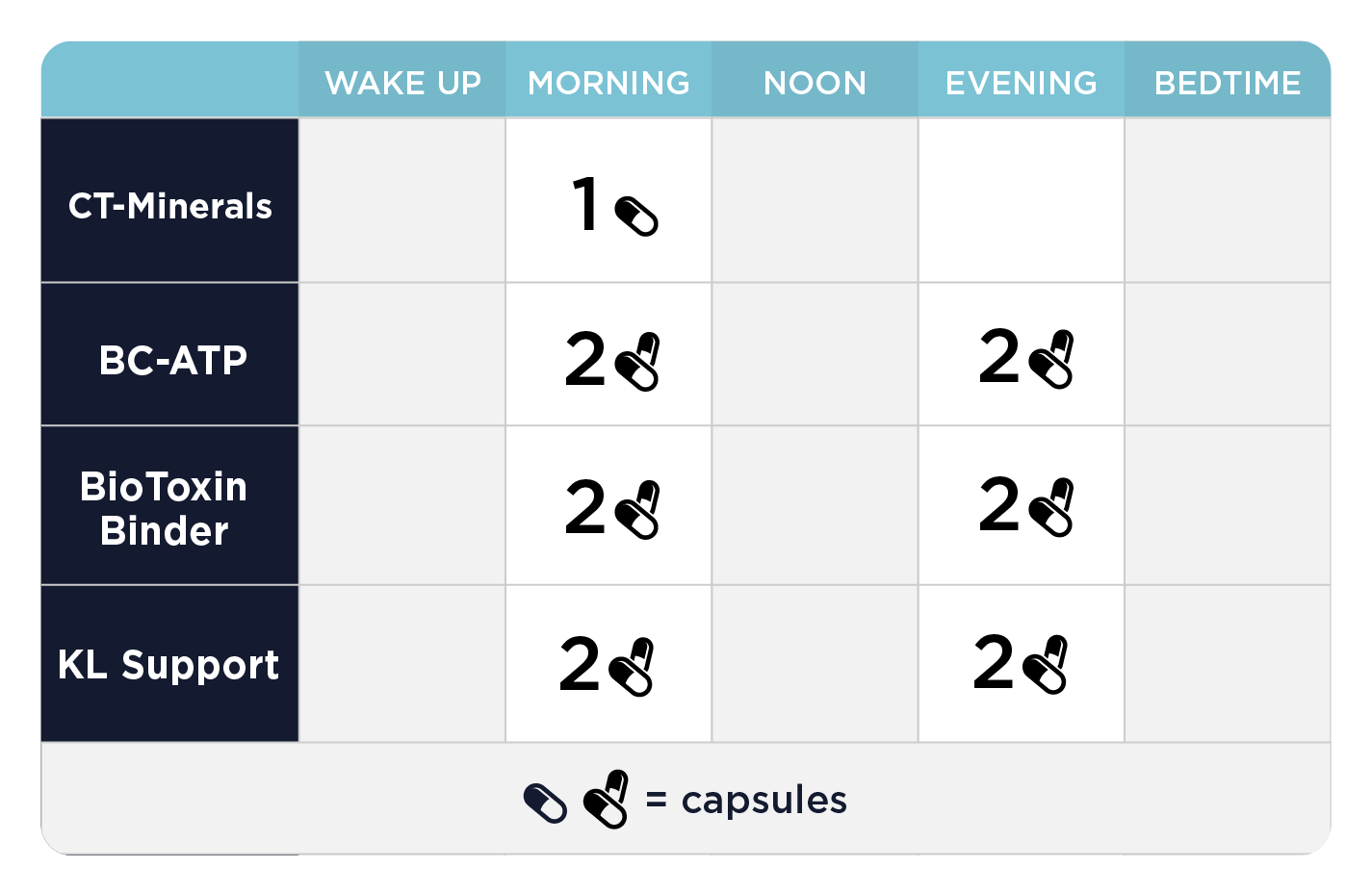
Phase 2: Gut & Immune Support
The goal of the second phase is to balance the gut microbiome, support healthy bile flow, remove of occasional intestinal buildup optimize digestive function. We are also becoming more aggressive at getting the microbiome back in balance and pulling mold/fungal compounds out of the body.
There are a variety of parasites that you may have inside your body, including roundworm, hookworm, tapeworm, hook and nematode. Parasites can increase inflammation and lead to various symptoms, including fatigue, brain fog, digestion issues, and more. When it comes to Lyme disease and parasites, it is thought that Borrelia and other co-infection causing pathogens can live inside these parasites.
Tick bites actually deliver nematodes inside your body that may carry these co-infections. This leads to more symptoms and complications and makes diagnosis and recovery more challenging. Furthermore, having too many bad gut bacteria and gut dysbiosis creates a feeding ground for parasites, further infections, inflammation, increased symptoms, and a higher risk of further disease. This is why Phase II tackles this with an aggressive approach (28).
To protect your gut flora and get rid of parasites, I recommend an anti-inflammatory, gut-healthy diet we discussed earlier. Certain herbs, including black walnut, sweet wormwood, garlic, oregano, tribulus, mimosa pudica, neem, wormseed, vidanga, passionflower, and clove are fantastic for parasite cleansing.
Para 1 and Para 2 are two supplements I recommend during this phase because they contain a necessary amount of anti-parasitic herbs. You may learn more about the danger of parasites, anti-parasitic herbs, and anti-parasitic nutrition in this article (29, 30, 31, 32, 33, 34, 35, 36, 37, 38, 39, 40, 41, 42, 43, 44).
Phase 2 Supplements
Advanced TUDCA: This is a fantastic supplement for drainage, kidney and liver support. Take 1 capsule in the morning with food and 1 capsule in the evening with food.
BC-ATP: This supplement supports and optimizes mitochondrial function. Take 2 capsules in the morning and 2 capsules in the evening.
Para 1: This supplement is important for digestive and immune support. Take 2 capsules when you wake up and 2 capsules at bedtime.**
Para 2: This supplement offers digestive and immune support. Take 2 capsules when you wake up and 2 capsules at bedtime.
BioToxin Binder: This supplement supports your microbiome and your immune system. Take 2 capsules in the morning and 2 capsules in the evening.*
*Note: We recommend that binders should not be taken with traditional binders, such as charcoal, clay, or diatomaceous earth and we recommend all binders away from Para 1, prescription medications, and antibiotics, as it may interfere with their absorption.
**Note: We recommend taking Para 1 one hour away from all binders (BioToxin Binder, Carboxy, HM-ET Binder, and ViRadChem Binder), as the binders can cause Para 1 to lose its effectiveness. All other CellCore products can be taken alongside Para 1.

Phase 3: Whole Body Immune Support
In Phase 3, we will build momentum for deeper, whole body cleansing and continue to focus on getting rid of any parasites. We are continuing this process because it takes about two months to get rid of parasites.
We will continue to support your mitochondria. It takes about three to six months to get the mitochondria back in balance, so we will be focusing on this throughout this program. Since biotoxin illness often experiences additional viral infections, we are bringing in ViradChem Binder to help your body get rid of viral infected cells and regain your health.
Additionally, Phase III also puts a major emphasis and lymphatic system support. Your lymphatic system is a major circulatory system and analogous to the drains in your home. A congested lymphatic system can lead to all kinds of issues including skin problems, fatigue, headaches, and weakened immunity.
To support your immune system, I recommend regular light exercise (walking, stretching, etc), breathwork, eating an anti-inflammatory diet, taking lymph-supporting herbs, including artichoke, burdock, sheep sorrel, astragalus, slippery elm, infrared sauna, dry brushing, proper hydration, massage, and chiropractic care. To learn more about your lymphatic system and lymphatic support, I recommend this article (45, 46, 47, 48, 49, 50, 51).
Phase 3 Supplements
LymphActiv: This supplement offers essential lymphatic support. Take 1 capsule in the morning and 1 capsule in the evening.
Para 1: This supplement is important for digestive and immune support. Take 2 capsules when you wake up and 2 capsules at bedtime.**
Para 3: This supplement offers digestive and immune support. Take 10 drops in water in the morning and 10 drops in water in the evening.
ViradChem Binder: This supplement supports detoxification and protection from environmental toxicity and viruses and supports your immune system. Take 2 capsules in the morning and 2 capsules in the evening.*
CT-Minerals: These plant-derived minerals help your digestion, tissue repair, and energy. Take 1 capsules in the morning.
BC-ATP: This supplement supports and optimizes mitochondrial function. Take 2 capsules in the morning and 2 capsules in the evening.
*Note: We recommend that binders should not be taken with traditional binders, such as charcoal, clay, or diatomaceous earth and we recommend all binders away from Para 1, prescription medications, and antibiotics, as it may interfere with their absorption.
**Note: We recommend taking Para 1 one hour away from all binders (BioToxin Binder, Carboxy, HM-ET Binder, and ViRadChem Binder), as the binders can cause Para 1 to lose its effectiveness. All other CellCore products can be taken alongside Para 1.
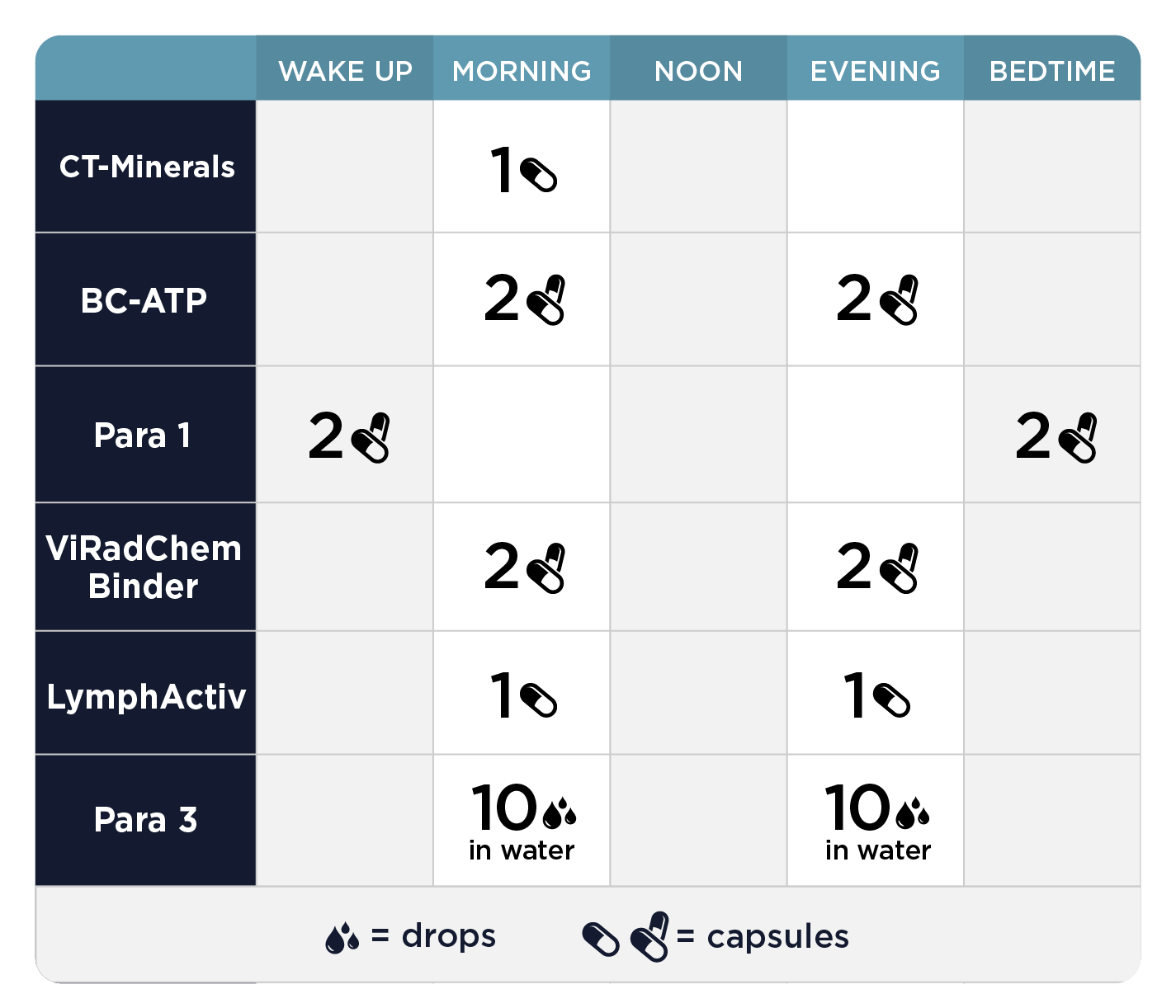
Phase 4A: Systemic Detox
In phase 4A, we will continue to support your mitochondria and immune system and promote cleansing within and beyond the gut. We will also add detoxification support for environmental chemicals and heavy metals.
Heavy metals serve no purpose in your body. Heavy metal toxicity can be very dangerous to your health. Heavy metals, including lead, arsenic, mercury, aluminum, and cadmium can increase inflammation, oxidative stress, and cellular interference. They can weaken your body making recovery from biotoxin illness more difficult.
Heavy metals and other toxins can lead to various symptoms, including fatigue, blurred vision, inflammation, joint stiffness, pain, weight gain, digestion issues, nervous system problems, and increased risk of cancer. As the mitochondria get stronger and our pathogen load goes down, we want to ramp up our aggressiveness in getting these out of the body.
Eating a nutrient-dense diet, proper hydration, movement, oil pulling, and other detoxification strategies that support cleansing, digestion, and elimination is critical. This is why we are adding HM-ET Binder for heavy metals in this phase (52, 53, 54, 55, 56, 57).
Phase 4A Supplements
KL-Support: This is a fantastic supplement supports kidney and liver health. Take 2 capsules in the morning and 2 capsules in the evening.
HM-ET Binder: This supplement supports detoxification from heavy metals. Take 1 capsule in the morning and 2 capsules at night.*
BC-ATP: This supplement supports and optimizes mitochondrial function. Take 2 capsules in the morning and 1 capsule in the evening.
Para 4: This supplement supports digestion, detoxification and immunity. Take 2 capsules when you wake up and 2 capsules at bedtime.
CT-Biotic: This supplement supports detoxification, digestive function and immunity. Take 1 capsule in the morning with food and 1 capsule in the evening with food.
*Note: We recommend that binders should not be taken with traditional binders, such as charcoal, clay, or diatomaceous earth and we recommend all binders away from Para 1, prescription medications, and antibiotics, as it may interfere with their absorption.
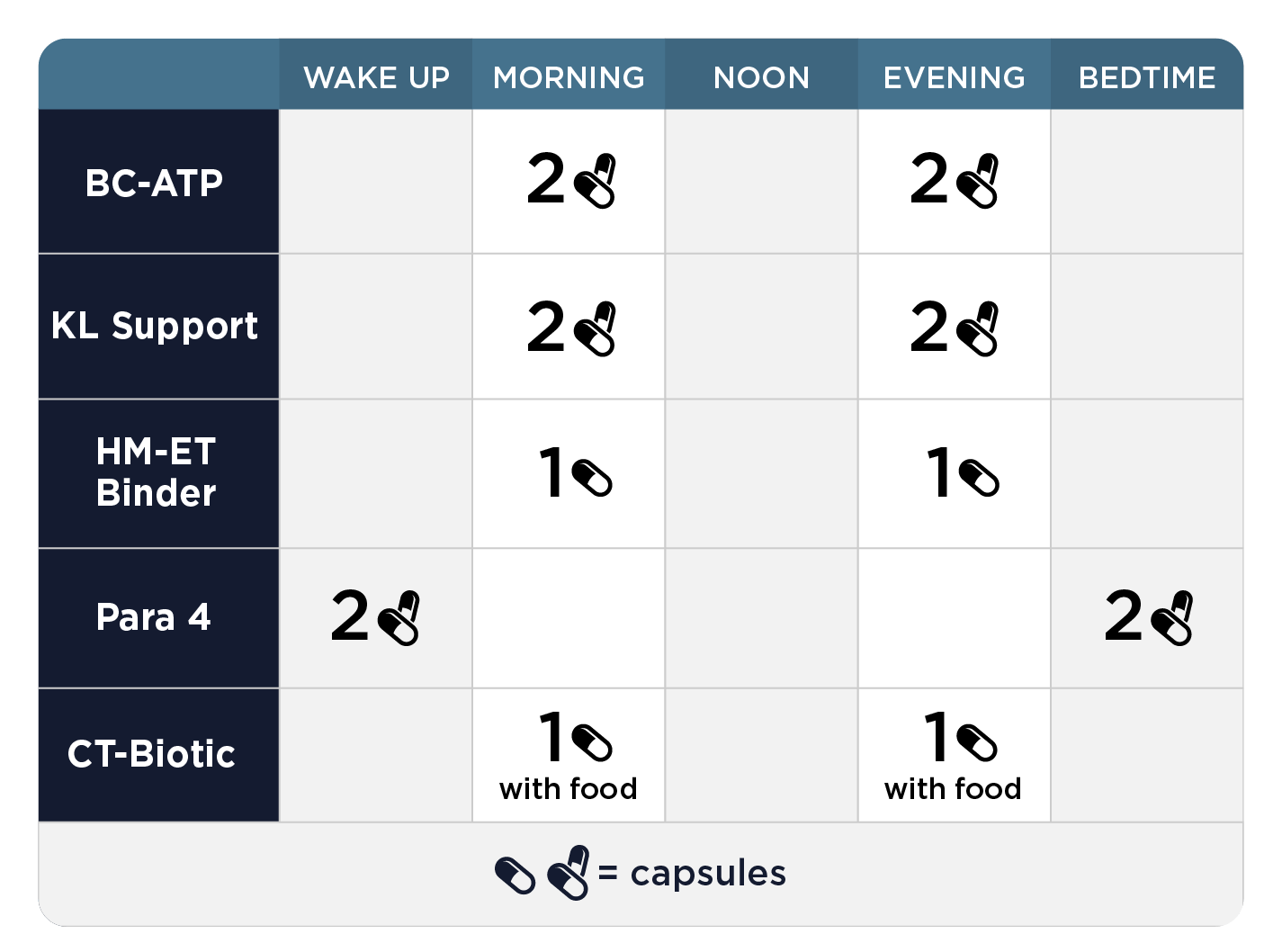
Phase 4B: Systemic Detox
Building on the progress made in Phase 4A, Phase 4B carries on to promote cleansing within and beyond the gut. It consists of Advanced TUDCA, BC-ATP, CT-Biotic, HM-ET Binder, and Metabolic Activator.
Advanced TUDCA is added back to this phase to continue promoting healthy liver function and bile flow, while Metabolic Activator supports hormonal balance, thyroid function, and the body’s natural ability to detoxify.*
Patients/clients will continue to take BC-ATP, CT-Biotic, and HM-ET Binder to promote detoxification processes in the gut, cells, and tissues, while also encouraging cellular repair and energy production.
Phase 4B Supplements
Advanced TUDCA: This is a fantastic supplement for drainage, kidney and liver support. Take 1 capsule in the morning with food and 1 capsule in the evening with food.
HM-ET Binder: This supplement supports detoxification from heavy metals. Take 1 capsule in the morning and 2 capsules in the evening.*
BC-ATP: This supplement supports and optimizes mitochondrial function. Take 2 capsules in the morning and 2 capsules in the evening.
Metabolic Activator: This supplement supports healthy metabolic, thyroid and mitochondrial function. Take 5 drops in water in the morning and 5 drops in water in the evening.
CT-Biotic: This supplement supports detoxification, digestive function and immunity. Take 1 capsule in the morning with food and 1 capsule in the evening with food.
*Note: We recommend that binders should not be taken with traditional binders, such as charcoal, clay, or diatomaceous earth and we recommend all binders away from Para 1, prescription medications, and antibiotics, as it may interfere with their absorption.
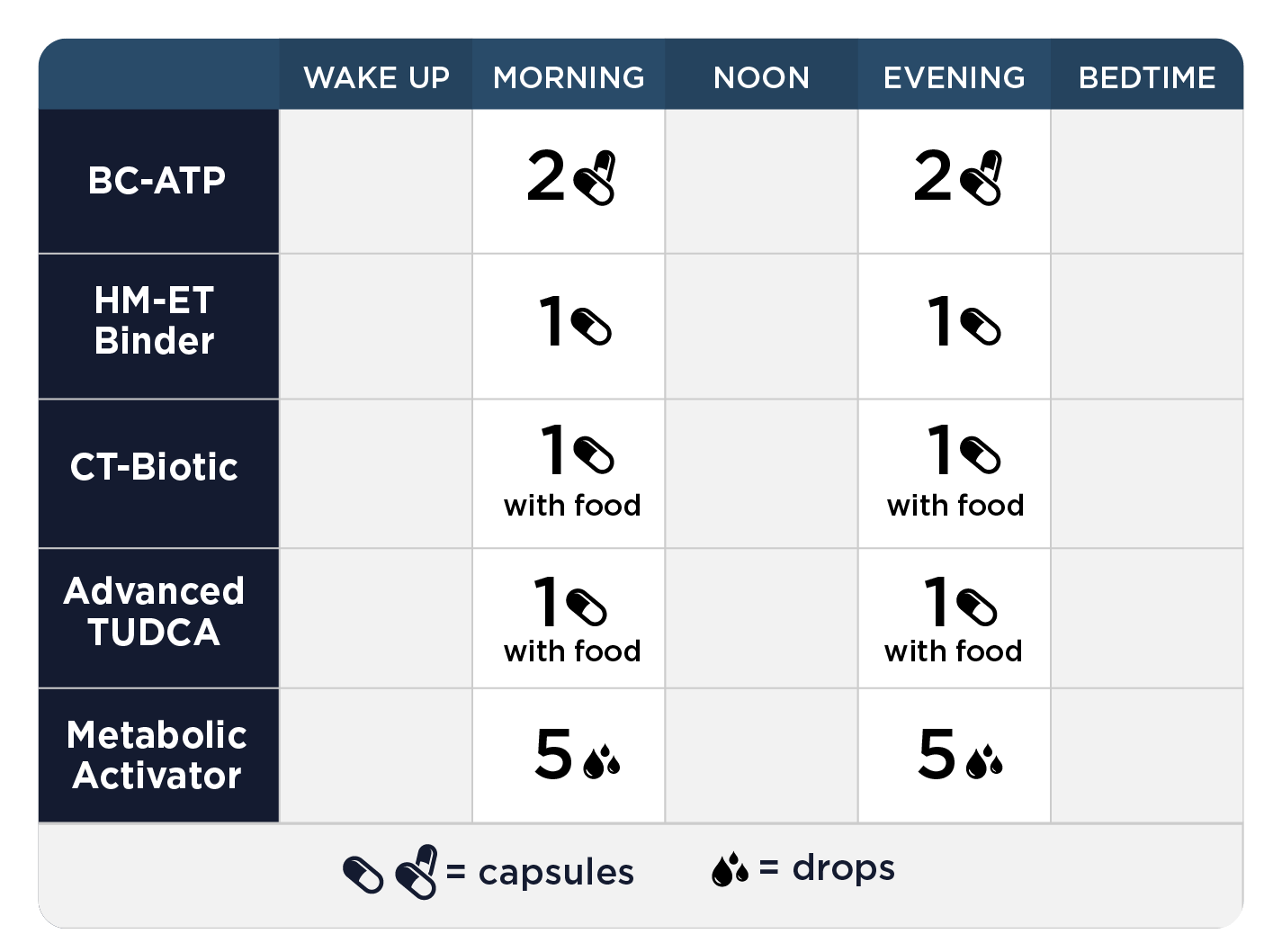
Phase 5: Deeper Immune Support
Phase 5 provides potent blends of herbs in tincture and supplement form, designed to encourage lymphatic drainage, optimize immune system function, promote systemic detoxification, and support the gut microbiome. It consists of IS-BAB, IS-BART, IS-BOOST, IS-BORR, and LymphActiv.
These products help to impact blood-borne bacterial issues associated with Lyme and Lyme coinfections and help to enhance lymphatic drainage. The nutrients in this phase optimize immune system function, which gives the body the extra push it needs to overcome obstacles at the root level.
Note: The liquid tincture format of the IS-line promotes faster absorption and maximum potency, as well as allows for customized dosing. As concentrated tinctures, the IS-line has higher potency than capsules. For those who are sensitive, it’s recommended to start with a low dose, gradually working up to the recommended daily dose.
Phase 5 Supplements
LymphActiv: This supplement offers essential lymphatic support. Take 1 capsule in the morning and 1 capsule in the evening.
IS-BORR: This supplement supports a healthy immune response, nurtures the immune system, aids energy production and detoxification. Take 1-10 dropperful in water and away from food in the morning and 1-10 dropperful in water and away from food in the evening.*
IS-BART: This supplement supports the body’s immune defenses and detoxification process and energy production. Take 1-10 dropperful in water and away from food in the morning and 1-10 dropperful in water and away from food in the evening.*
IS-BOOST: This supplement supports healthy bile flow, immunity, optimal digestive function and the detoxification. Take 1-10 dropperful in water and away from food in the morning and 1-10 dropperful in water and away from food in the evening.*
IS-BAB: This supplement nurtures the immune system, promote energy production and detoxification. Take 1-10 dropperful in water and away from food in the morning and 1-10 dropperful in water and away from food in the evening.*
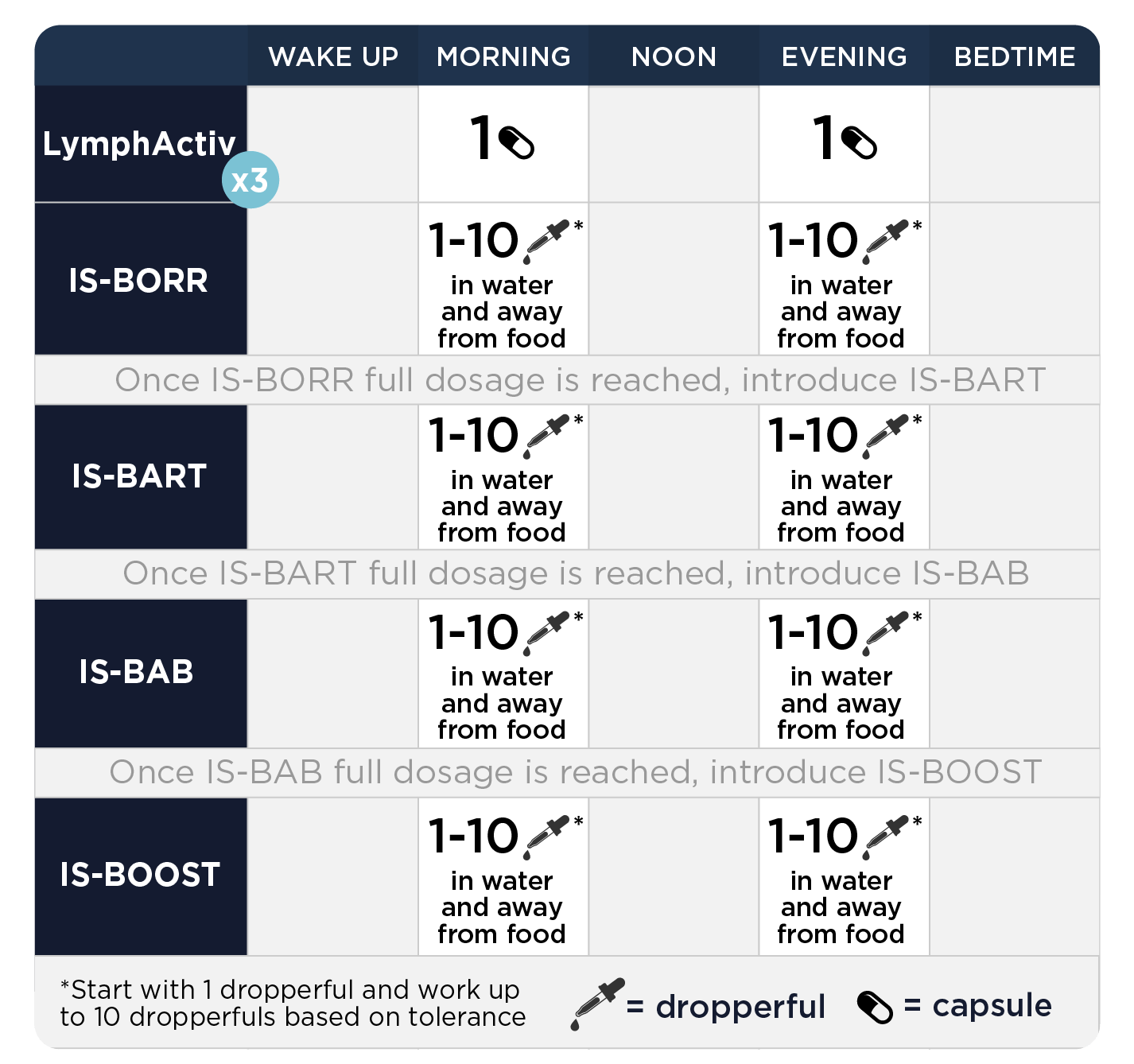
*Note: We recommend taking it on an empty stomach (which is 20-30 minutes before meals or two hours after a meal). It’s recommended to take only two of the IS-products at a time, and they can be taken in the same glass of water.
Final Thoughts
Lyme coinfections are often caused by the same ticks as Lyme disease and often occur at the same time. They can become chronic and cause severe symptoms and serious health issues. Yet, they are often missed during diagnosis and left untreated. Yet, catching these infections and treating them correctly is critical. I recommend that you follow my natural support strategies to overcome Lyme coinfections.
If you want to work with a functional health coach, I recommend this article with tips on how to find a great coach. Our website offers long-distance functional health coaching programs with our world-class team of health coaches. For further support with your health and other goals, just reach out—our fantastic coaches are here to support your journey.
Inflammation Crushing Ebundle
The Inflammation Crushing Ebundle is designed to help you improve your brain, liver, immune system and discover the healing strategies, foods and recipes to burn fat, reduce inflammation and Thrive in Life!
As a doctor of natural medicine, I have spent the past 20 years studying the best healing strategies and worked with hundreds of coaching clients, helping them overcome chronic health conditions and optimize their overall health.
In our Inflammation Crushing Ebundle, I have put together my very best strategies to reduce inflammation and optimize your healing potential. Take a look at what you will get inside these valuable guides below!


